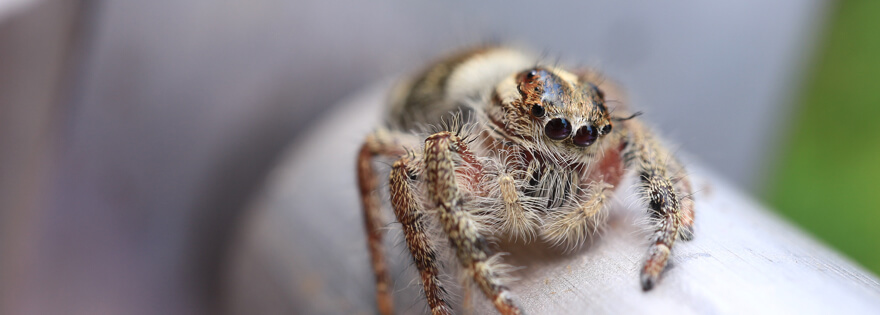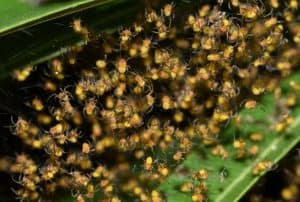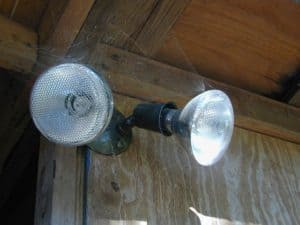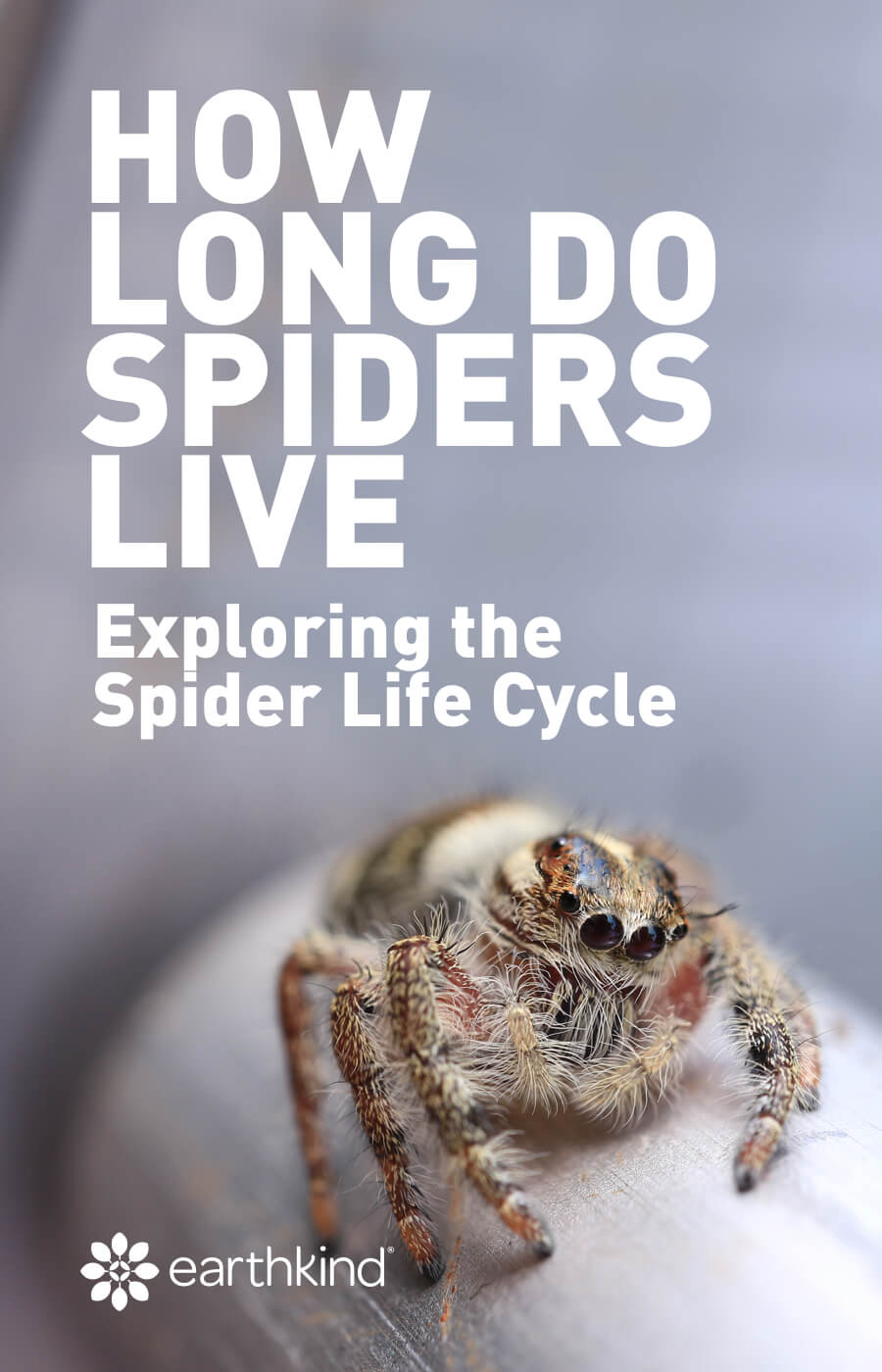How Long Do Spiders Live? Exploring the Average Life Cycle
By: EarthKind
Common house spiders, on average, live for about one year. This all depends on the species, though, as some can live to be around 7 years old. There are even some types that can live up to 30 years!
Below, we explore the lifespan of common household spiders and other types of spiders you might find near your home. We discuss their different stages of life, what spiderlings are, how long they live, how long they can live without food, and more. This information could help prepare you for the next time you see one in your home.
The Spider Life Cycle Stages
Baby spiders hatch from a spider egg sac and are called spiderlings. An egg sac may contain as many as 1,000 spider eggs! Since they lay eggs, you will never see a pregnant spider, but you may see one carrying her egg sac on her back. In other instances, mothers will attach their egg sacs in crevices or sheltered areas.
The eggs can hatch in just a few weeks if conditions are favorable (such as during spring or summer, when temperatures are warm and moisture is plentiful). Spider egg sacs may also “overwinter” or wait out the cooler weather in a dormant state before hatching.
When spiderlings hatch, they look like miniature adult spiders with eight legs, a head, and a body. They are usually black, brown, or gray and don’t have any distinctive colors or markings on their abdomens yet. Spiderlings are not dependent on their mothers and will often start life alone. As soon as they hatch, they leave their siblings, looking for a home to call their own. Some spiders simply walk away and some use a process called ballooning, which is the act of raising their abdomen, releasing threads of silk into the air, and letting the wind carry them away.
For most species, nearly all of the eggs spiders lay will hatch into spiderlings, including hobo spiders and orb weavers. But some species don’t fare so well. The Giant House Spider, for example, will only hatch 1% of around 50 eggs per sac.
Keep your home pest free with simple, effective solutions. Subscribe and save!
Spider Lifespan
The average lifespan of a common house spider is about a year, but this does depend on the species. For example, the common barn funnel weaver has a life expectancy of up to 7 years, black widow spiders can live for up to 3 years, the brown recluse can live 1-2 years, wolf spiders can live up to a year, and tarantulas can live anywhere from 10-30 years!
And while spiders have average lifespans, some can live much longer than expected. For example, trapdoor spiders have a lifespan between 5 to 20 years, but the longest living spider ever recorded was a female trapdoor spider, named Number 16, who lived an estimated 43 years! She lived in a burrow in an Australian reserve and died in 2016 after likely being attacked by a parasitic spider wasp.
Gender is another factor. Females tend to live longer than male spiders. People are probably their biggest threat. Curious cats and dogs can also bring an abrupt end to their life.
Spider life is a solitary life. Adults do not live in groups or colonies. House spiders are not territorial or aggressive, but living alone gives them better chances of catching enough food without needing to share. They don’t need to eat daily and can survive long periods of time without food, but they will eat often if food is abundant. Spiders do need to drink water, though. They often drink from dew drops, condensation, or other sources like a dripping faucet, leaky appliance, or pet bowl.
Most of their time is spent waiting. They wait patiently in their webs for a meal. Spinning a web does not take much time or effort for the common house spider, so they will abandon a web that isn’t catching many bugs, moving on to another location, leaving behind their cobwebs for you to clean up. Ideal locations for spider webs are areas where other insects may be found such as in attics and basements near a light, door, window, food, or water source.
How Long Can They Live Without Food?
The amount of time that spiders can live without food varies between different species. Larger species tend to live longer without food than smaller species, but in general, they can go anywhere from 30-60 days without food. Even baby spiders can go without food for nearly the same amount of time as their adult counterparts. They don’t have a daily eating routine and will eat whenever they’re hungry or whenever they manage to catch prey.
Spiders are mostly carnivores and prefer to eat live or recently killed prey. The arachnids you find in and around your home usually eat insects. Common foods include flies, mosquitos, gnats, ants, and moths, but they will eat most insects caught in their webs, such as earwigs, crickets, cockroaches, centipedes, and even spiders of different species. Hunting spiders that don’t make webs will often hunt down larger insects such as grasshoppers, beetles, and crickets.
Access to water can also impact the amount of time a spider can live without food. If water is easily accessible, they can survive for longer periods of time.
In cases of food shortages, it’s possible for female spiders to even eat their babies after they’ve hatched and for siblings to eat their newborn family members.
Defense Strategies of Spiders That Prolong Lifespan
Spiders have a variety of fascinating defense strategies that not only protect them from predators but also significantly contribute to prolonging their lifespan. A few of these strategies include:
- Camouflage and Disguise: Many spider species, like the Crab Spider, have developed the ability to blend into their environment. Their ability to mimic the colors and textures of leaves, flowers, or bark helps them avoid detection by both predators and prey. This form of camouflage is crucial for survival and directly impacts their lifespan by reducing the likelihood of being consumed by predators.
- Venom: Spiders, like the Black Widow, are known for their potent venom. This venom serves as both a defense mechanism and a tool for subduing prey. The effectiveness of their venom in deterring potential predators plays a significant role in these spiders living to their full life expectancy.
- Web Weaving: The intricate webs of species like the Orb Weaver are not just for catching prey, they also serve as an early warning system against larger animals that might accidentally crush them. The vibrations in the web alert the spider of approaching dangers, allowing them to hide or flee.
- Playing Dead: Certain spider species will play dead when threatened. By appearing lifeless, they often can avoid being eaten by predators that prefer live prey. This tactic, while simple, is surprisingly effective in extending their life span.
- Burrowing and Hiding: Ground-dwelling spiders, such as Trapdoor Spiders, construct burrows or hide under rocks to protect themselves from both the elements and predators. Their ability to remain hidden for extended periods is key to their survival and longevity.
Each of these defense strategies is a testament to the spider’s evolutionary success. By evading predators and adverse conditions, these spiders are able to live longer lives, often exceeding the typical lifespan expectations for their species. This fascinating aspect of spider behavior underscores their role as adaptable and enduring creatures in the natural world.
You can take steps to prevent these pests from coming into your home, but if you do find one, you may not want to try waiting to outlive it. Your best bet to prevent infestation is to start using Stay Away Spiders, a botanical spider deterrent that is guaranteed to work, along with following these other natural ways to get rid of spiders.











 day
day